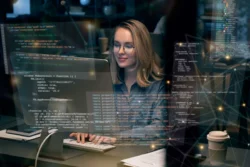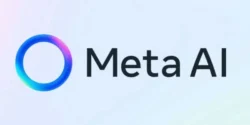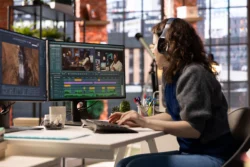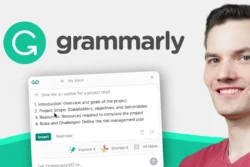In 2025, generative AI is no longer just a tool—it’s a creative partner reshaping how artists, musicians, and storytellers bring their visions to life. From crafting stunning generative AI art with tools like MidJourney to composing original soundtracks via AI music generation platforms like Suno, and even building interactive AI storytelling experiences in video games, AI is unlocking new frontiers in creativity. Unlike traditional software, generative AI collaborates with humans, offering endless possibilities while sparking debates about originality, ethics, and the future of art. This article explores how generative AI enhances creative collaboration, diving into its applications in art, music, and interactive narratives, showcasing the best tools, addressing ethical issues in AI-generated art and music, and answering key questions like “Can AI create original music for my project?” Whether you’re a hobbyist, professional creator, or tech enthusiast, discover how generative AI is democratizing creativity and what it means for the creative landscape of tomorrow.
What Is Generative AI in Art and Music?
Generative AI refers to algorithms, often based on large language models (LLMs) or diffusion models, that create new content—visuals, audio, or text—by learning patterns from vast datasets. In generative AI art, tools like MidJourney, DALL-E 3, and Stable Diffusion generate images from text prompts, enabling artists to produce everything from surreal landscapes to hyper-realistic portraits. For AI music generation, platforms like Suno, Soundraw, and Amper Music analyze musical structures to compose melodies, harmonies, or full tracks in genres from classical to EDM. In interactive storytelling, AI-driven systems like AI Dungeon or custom game engines create narratives that adapt to user inputs, crafting dynamic plots for games or immersive virtual reality (VR) experiences. Unlike traditional creation tools, generative AI doesn’t require users to master technical skills like painting or music theory—just a clear vision and the ability to craft precise prompts. This accessibility has made it a game-changer, with over 10 million creators worldwide using AI tools by 2025, according to industry estimates, transforming how creativity is expressed and shared.
How to Use Generative AI for Art Creation
Creating art with generative AI is both intuitive and transformative, allowing anyone to produce professional-grade visuals without years of training. Here’s a step-by-step guide to using generative AI for art creation using tools like MidJourney:
- Choose a Platform: Select a tool like MidJourney (2025)**, accessible via Discord or its web interface, known for its vibrant, painterly outputs. Alternatives include DALL-E 3 for photorealism or Stable Diffusion for open-source flexibility.
- Craft a Text Prompt: Write clear, descriptive prompts, e.g., “a futuristic city at sunset, cyberpunk style, vibrant neon lights, hyper-detailed, cinematic.” Include style modifiers like “watercolor” or “oil painting” for unique effects.
- Adjust Settings: Use platform-specific parameters (e.g., MidJourney’s –ar 16:9 for widescreen) to control aspect ratio, detail, or stylization.
- Iterate and Refine: Review AI-generated images and tweak prompts to refine details, such as adding “soft lighting” or removing unwanted elements.
- Post-Process: Export the final image and use editing software like Photoshop for touch-ups, ensuring a personal touch.
Case Study: In 2024, artist Beeple sold an AI-assisted digital artwork for $6.6 million at Christie’s, blending MidJourney outputs with human edits, proving AI art’s commercial viability. For creators, generative AI art tools save time, spark inspiration, and enable rapid prototyping for album covers, posters, or NFT collections.
Best AI Tools for Music Composition in 2025
AI music generation is revolutionizing how musicians and producers create soundtracks, jingles, or full albums, offering tools that compose original music tailored to specific moods or genres. Here are the best AI tools for music composition in 2025:
- Suno: Known for generating vocal tracks with lyrics, Suno creates radio-ready songs in minutes. Ideal for indie musicians or content creators needing background music for YouTube videos.
- Soundraw: Offers customizable instrumental tracks, allowing users to adjust tempo, key, or instruments. Perfect for podcasters or marketers creating ad jingles.
- AIVA: Specializes in orchestral and cinematic music, used by game developers for epic soundtracks. Its premium plan ($49/month) supports commercial use.
- Amper Music: Focuses on royalty-free music for videos, with intuitive controls for non-musicians. Its enterprise plan suits large-scale projects.
- Boomy: Enables users to create and distribute AI-generated songs to Spotify, appealing to hobbyists wanting quick releases.
Example: In 2025, a small game studio used AIVA to compose a 30-minute orchestral soundtrack for their indie RPG, saving thousands compared to hiring a human composer. These tools answer the question “Can AI create original music for my project?” with a resounding yes, offering speed, affordability, and customization.
Pro Tip: Always review AI-generated music for coherence and add human touches (e.g., live vocals or manual mixing) to enhance authenticity, especially for commercial projects.
AI-Powered Interactive Narratives in Video Games
Interactive AI storytelling is redefining video games and immersive media by creating narratives that adapt to player choices in real time, offering personalized experiences. AI-driven systems power dynamic dialogue, evolving plots, and responsive non-player characters (NPCs), making games feel alive. Here’s how AI-powered interactive narratives work and why they matter:
- Dynamic Dialogue: Tools like Inworld AI generate context-aware NPC dialogue, allowing players to have natural conversations. For example, an NPC in a fantasy RPG might react differently based on a player’s tone or past actions.
- Adaptive Plots: AI Dungeon and custom game engines use LLMs to craft branching narratives, where player decisions shape unique story arcs, unlike static scripts.
- VR Integration: AI-driven VR storytelling combines AI narratives with virtual reality, creating immersive experiences like virtual theater or historical simulations, used in education and entertainment.
- Procedural Content: AI generates unique quests, levels, or environments, as seen in games like No Man’s Sky, enhancing replayability.
Case Study: In 2025, indie game Starveil went viral for its AI-driven narrative, powered by a custom GPT-4 model, where players’ choices led to over 10,000 unique endings, earning praise for its interactive AI storytelling. This technology empowers small studios to compete with AAA titles, democratizing access to complex development tools.
Pro Tip: For developers, experiment with how AI make makes interactive stories for games using open-source frameworks like Twine with ChatGPT integration for rapid prototyping.
Navigating Ethical Issues in AI-Generated Art and Music
As generative AI gains traction, ethical issues in AI-generated art and music spark heated debates among creators, policymakers, and audiences. Key concerns include:
- Originality and Copyright: AI tools train on vast datasets, often scraping public art or music without explicit consent, raising questions about ownership. In 2024, a U.S. court ruled that AI-generated art cannot be copyrighted, leaving creators in limbo. Generative AI copyright issues remain unresolved, with platforms like MidJourney facing lawsuits.
- Artist Displacement: Critics argue AI could replace human artists, though proponents see it as a tool enhancing creativity, not competing with it. For example, musicians use Suno to brainstorm, not replace their work.
- Cultural Sensitivity: AI outputs may perpetuate biases or stereotypes if trained on skewed data, requiring creators to review outputs carefully.
- Transparency: Should AI-generated works be labeled? Some platforms, like DeviantArt, require AI disclosure, but enforcement varies.
Solutions: Creators can mitigate risks by using licensed datasets (e.g., ArtStation’s AI-friendly collections), disclosing AI use, and combining AI outputs with human edits to add originality. Policymakers are exploring frameworks like the EU’s AI Act (2025) to regulate generative AI copyright issues, but global consensus is lacking.
The Future of Generative AI in Creativity
Looking ahead, generative AI’s role as a creative partner will expand, driven by advancements in multimodal models (combining text, image, and audio) and real-time collaboration. Predictions for 2030 include:
- Hyper-Personalized Art: AI will generate custom art or music based on user emotions, detected via wearables, for therapeutic or marketing purposes.
- AI-Driven VR Storytelling: Fully immersive VR worlds with AI-generated characters and plots will dominate gaming and education.
- Collaborative AI Studios: Platforms like Runway ML will evolve into virtual studios where multiple creators and AI co-create in real time, blurring lines between human and machine input.
- Ethical Standards: Industry-wide certification for “human-AI hybrid” works will address transparency and ethical issues in AI-generated art.
Challenges remain, including energy consumption (training models like DALL-E emits significant CO2) and ensuring equitable access to AI tools for creators in developing regions. Yet, the potential to amplify human creativity is immense, with generative AI poised to redefine artistic expression.
FAQs: Generative AI in Creative Fields
What Is Generative AI in Art and Music?
Generative AI uses algorithms to create original visuals, audio, or text based on user inputs, trained on vast datasets. Tools like MidJourney for art or Suno for music enable anyone to produce professional-grade content without technical expertise.
Can AI Create Original Music for My Project?
Yes, platforms like Soundraw or AIVA generate royalty-free, customizable music for videos, games, or ads. Add human edits to ensure uniqueness and check licensing for commercial use.
How Does AI Make Interactive Stories for Games?
AI-driven tools like Inworld AI or AI Dungeon generate dynamic dialogue and branching plots that adapt to player choices, creating personalized narratives for games or VR experiences.
How Can I Address Ethical Issues in AI-Generated Art?
Use licensed datasets, disclose AI use, and combine AI outputs with human edits to ensure originality. Stay updated on generative AI copyright issues via legal and industry news.
Conclusion
Generative AI is transforming creativity, acting as a partner that amplifies human imagination in art, music, and storytelling. From generative AI art tools like MidJourney enabling stunning visuals to AI music generation platforms like Suno crafting original tracks, and AI-powered interactive narratives revolutionizing games, AI empowers creators to push boundaries. Yet, ethical issues in AI-generated art and music, like copyright and transparency, demand careful navigation. By embracing tools like the best AI tools for music composition in 2025, learning how to use generative AI for art creation, and exploring AI-driven VR storytelling, creators can unlock new frontiers while staying authentic. Start experimenting with platforms like MidJourney or Suno today, and join the creative revolution at the intersection of human ingenuity and AI innovation.







